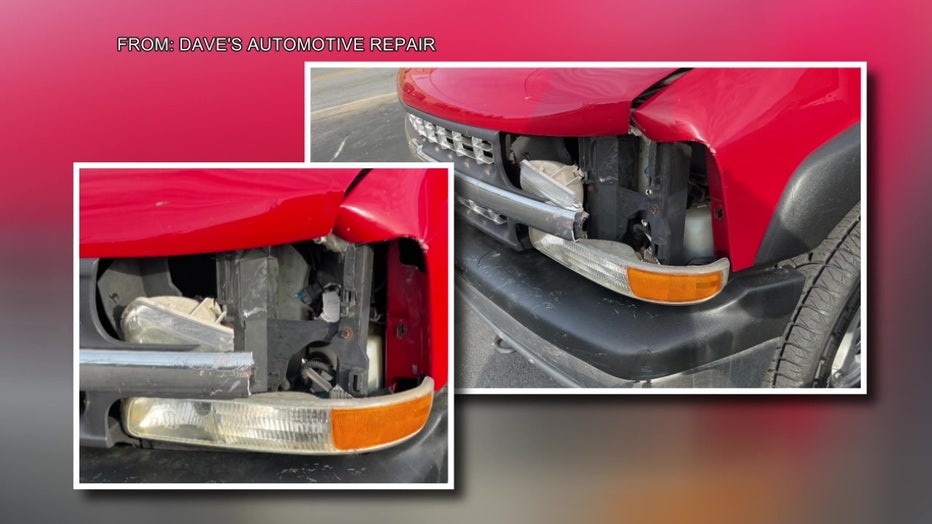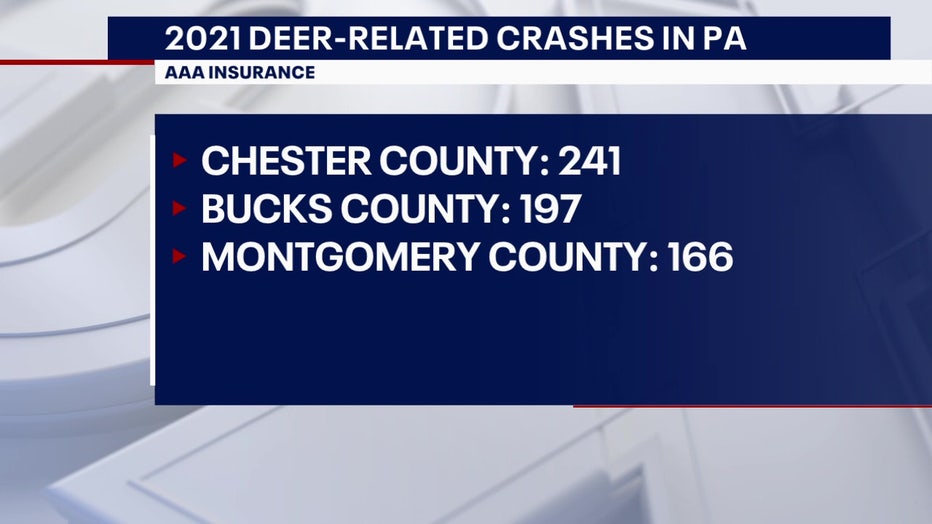Oh deer!: Pennsylvania ranks among top states in deer-vehicle collisions, AAA says
Oh deer!: Pennsylvania ranks among top states in deer-vehicle collisions, AAA says
Pennsylvania is among the top states in deer-vehicle collisions, according to data collected by AAA. The crashes have lead to costly repairs totaling thousands of dollars for Pennsylvania drivers.
PHILADELPHIA - Pennsylvania consistently ranks as one of the top states for deer-vehicle collisions, according to AAA, and we are now entering the peak of deer mating season.
"We see a spike in motorists hitting deer October, November and December every year," said Jana Tidwell, AAA Public Affairs. "Pennsylvania traditionally ranks in the top three states in the country for the number of deer strikes we see here annually. Locally in the Philadelphia five county area, Bucks County, Chester County and Montgomery County are three of the top ten counties in Pennsylvania where we see the most deer strikes."
Dave’s Automotive Repair in West Chester sees between two to three damaged vehicles a month during the busy deer mating season.
"By far the worst one we have seen here was a very nice lady who brought her car in. It actually went up in through her windshield and she got kicked in the face by the deer," said J.T. Aloisio, Auto Repairs Manager. "She was in great spirits though. She was joking about it saying all this stuff. It was right around Christmas time, so she said the reindeer were coming for her."

Dave’s Automotive Repair in West Chester sees between two to three damaged vehicles a month during the busy deer mating season.
Aloisio said he hit a deer in his grandfather’s truck last fall and the damage quickly added up and would’ve cost around $4,500.
In Pennsylvania, the average insurance claim was right around $4,300, according to AAA.
"Early mornings, people coming to work, that’s when I hit a deer on my way into work,’ said Aloisio. "Going home as well, when it starts getting a little bit darker, that’s when my stepmom was driving home, and she hit a deer on her way getting dinner for the family."
Aloisio said his wife, brother and aunt have also been in collisions with deer in recent years.

Pennsylvania consistently ranks as one of the top states for deer-vehicle collisions, according to AAA, and we are now entering the peak of deer mating season.
"It was unfortunate, definitely put a damper on my morning," said Aloisio.
Deer are more active and out during dawn and dusk.
"Eliminate distractions behind the wheel. The phone, the radio, eating, drinking those kinds of things. Focus on the roads," said Tidwell. "If you have the unfortunate experience of hitting a deer, first and foremost, never approach the deer, move your vehicle off to the side of the road to a safe space, and call police immediately."
Here is additional safety information from AAA:
- Pay attention to road signs. Yellow, diamond-shaped signs with an image of a deer indicate areas with high levels of deer activity.
- Don’t drive distracted. Continually scan roadways. Drivers should continuously sweep their eyes across the road in front of the vehicle looking for signs of animals and movement. Animals may also travel alongside the road, so make sure to look along both sides of the roadway, as well. While the most likely crash happens when drivers strike an animal, on occasion the animal may run into the vehicle.
- Be especially attentive in early morning and evening hours. Many animals, especially deer, are most active from 5-8 a.m. and 5-8 p.m., prime commuting times for many.
- Use high beams when there is no oncoming traffic. You can spot animals sooner. Sometimes the light reflecting off their eyes will reveal their location.
- Slow down, and watch for other deer to appear. Deer rarely travel alone, so if you see one, there are likely to be more nearby.
- Slow down around curves. It is harder to spot animals when going around curves.
- One long blast. A long blast on your horn may frighten animals away from your vehicle.
- Resist the urge to swerve: Instead, stay in your lane with both hands firmly on the wheel. Swerving away from animals can confuse them so they don’t know which way to run. It can also put you in the path of oncoming vehicles or cause you to crash into something like a lamppost or a tree.
- If the crash is imminent, take your foot off the brake: during hard braking the front end of your vehicle is pulled downward which can cause the animal to travel up over the hood towards your windshield. Letting off the brake can protect drivers from windshield strikes because the animal is more likely to be pushed to one side of the vehicle or over the top of the vehicle.
- Always wear a seatbelt. The chances of being injured when hitting an animal are much higher if you do not have your seatbelt on.
- Drivers should consider purchasing comprehensive insurance, if they don’t already have it. Comprehensive insurance is the type of insurance that covers animal strikes.

